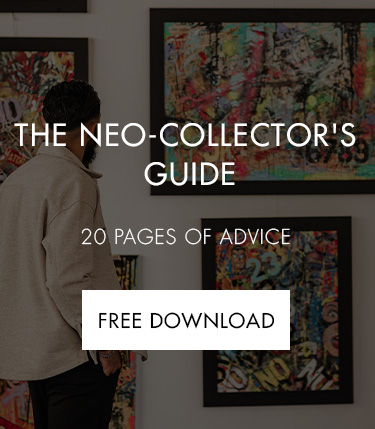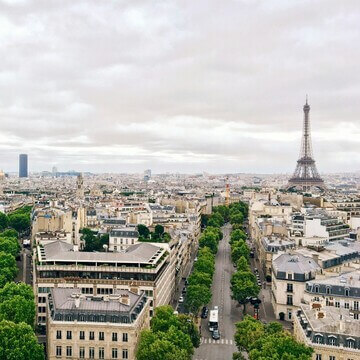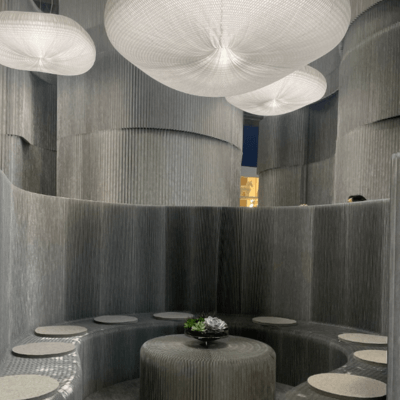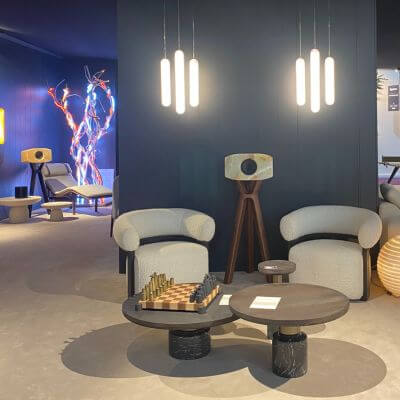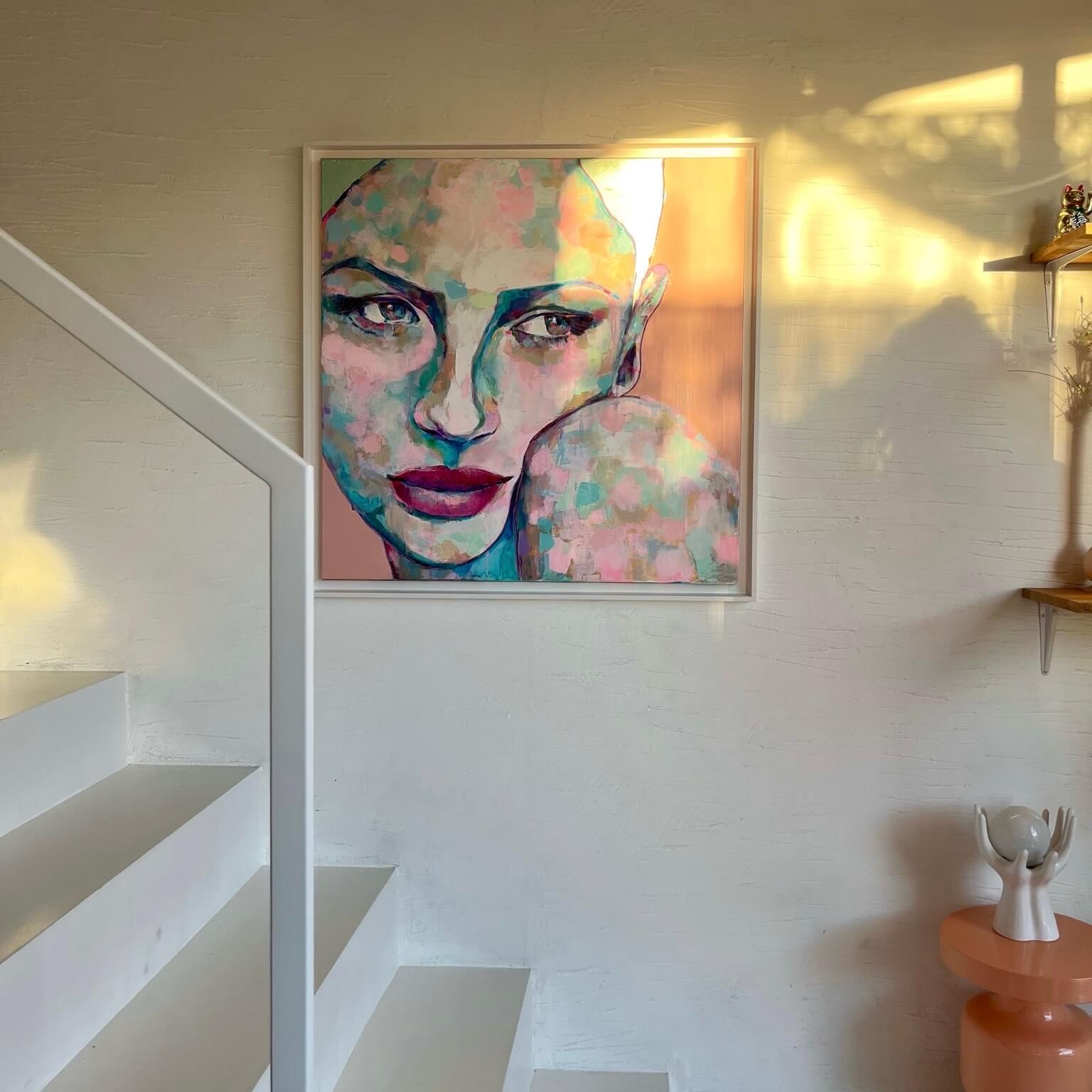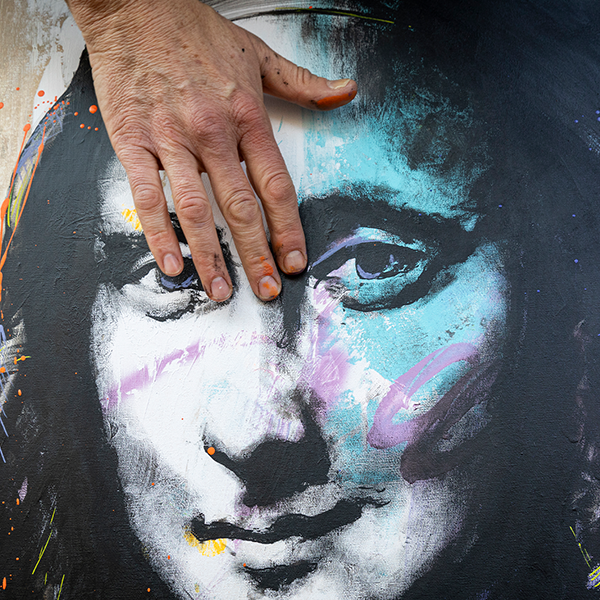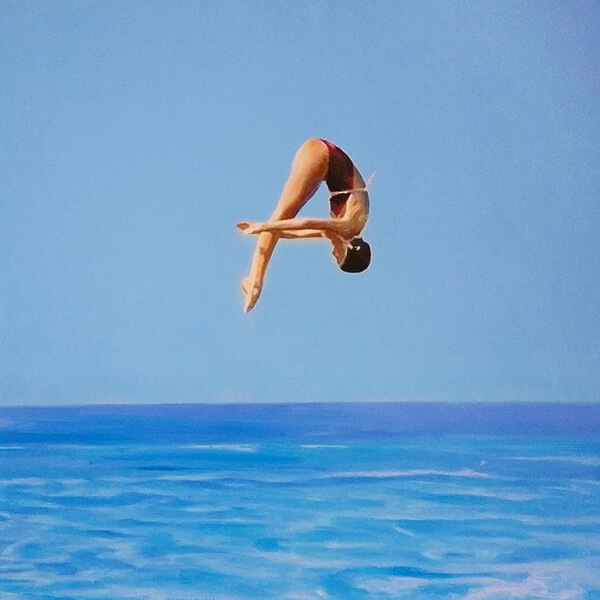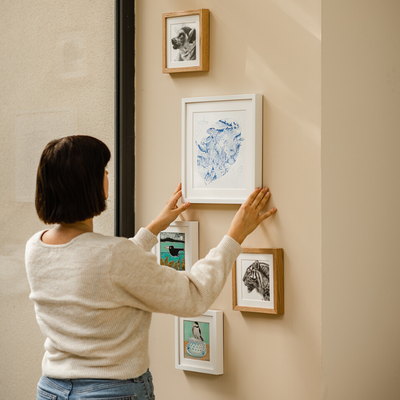News
From prison to art
- 03/10/2022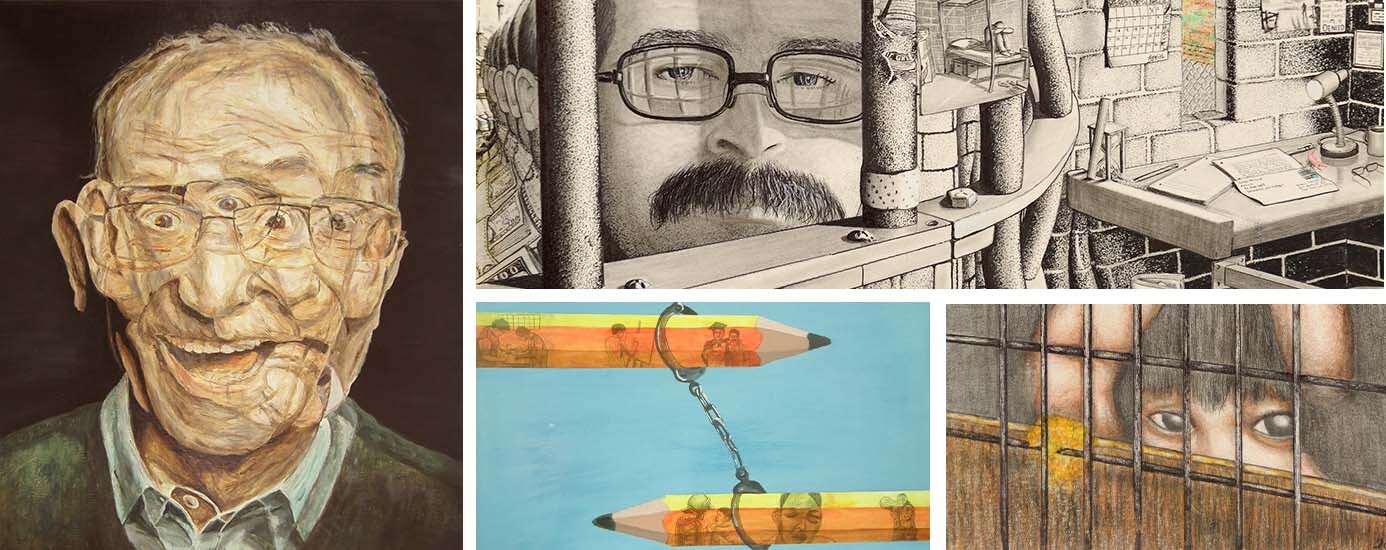
Peter Echtermeyer became a prison chaplain in Germany in 1989. After ten years of working with inmates in similar conditions, but with the comfort of going home to his family every evening, he became a representative of an association that works in all prisons around the world. Traveling half the year, he witnessed the disparities in the treatment of prisoners from one country to another and sought to raise public awareness on the subject, but was still struggling to make himself heard. Finally in 2009, deeply moved by the public's reaction to a first exhibition of works made by detainees, he realised that Art provides the best dialogue, it is a universal language, without words it conveys emotions, fears and hopes. This is how he founded Art and Prison. an association that organises art competitions every two years, involving inmates from all over the world. These works are a poignant testimony and bear a message of humanity and are regularly exhibited to the public.
Find out more about the next exhibition from 12 October to 7 November in Marseille
Find out more about the next exhibition from 12 October to 7 November in Marseille
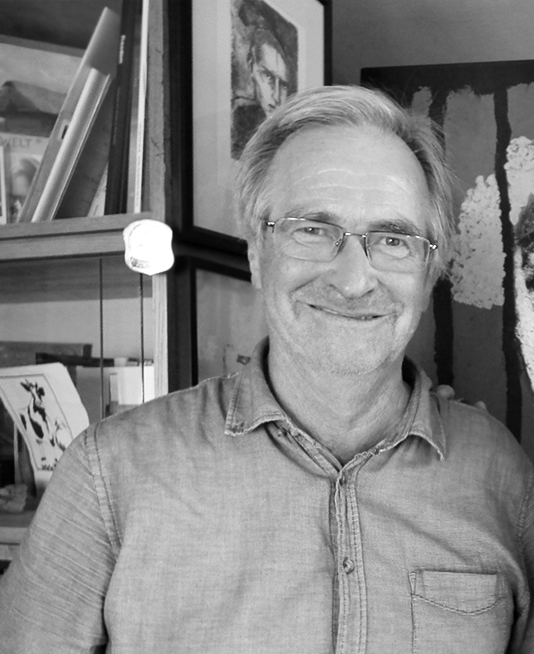
Interview OF Peter Echtermeyer, foUNDEr of Art And Prison
- Who are you and what's your story?
When this was my daily life, I was a little blind to the normal reality of free people.
In 1999, I was elected as a representative of the International Commission of Catholic Prison Pastoral Care (ICCPPC). There, I traveled a lot, in many countries, especially in Europe[...]. It was a very interesting time for me, I was speaking a lot about my experience, what was happening in prison. We were trying to bring human standards of treatment of offenders to level in different countries. For ten years, this was one of my main missions, traveling part time, while I was still working half of the time in jail. As I was speaking a lot about the situation in prison, I realized people were interested, but they weren’t understanding the reality of what was happening, what I saw.
That’s when Art comes in !
We organized an Art contest in Rome during a work congress in the Church of Santa Maria del Popolo. We had an exhibition of 300 paintings from all over the world. It was astonishing that 5 000 people came to see our 300 paintings. It was enough to found an organization only about this : Art and Prison so we founded the association Art and Prison in Berlin.
I am the President and founder of the association. Art and Prison is not a confessional organization, it is meant for everyone ; it involves 50 people. Including Inga Lavolé-Khavkina and Bruno Lavolé, who I met in Rome for the presentation of the exhibition Un demi-mètre carré de liberté.
After 33 years, I stopped working in Prison. I’m now 67 years old and I am still organizing more exhibitions, three in the coming years : one in France this year, (organized by Art et Prison), one in Vaduz in Liechtenstein in 2023, and one in Rome in 2025.
Other versions of the organization have been created in France (Art et Prison by Bruno Lavolé) and in Poland. Bruno Lavolé also wants to create a European project.
Twelve years after founding Art and Prison, we have already organized exhibitions in many countries, from France (in Marseille, Saint Nazaire, Strasbourg) to New Zealand. Every country is different, there are different mentalities in different countries. In France, it’s very special.
- What is so special in France?
Laicity is unique to France. You can’t bring Jesus or Buddha or any representation of interior conviction to Prison. On the other hand, their mind is more open to human treatment of offenders in prison. France is a leading voice in the world about Human rights, unlike the treatment of prisoners in the USA or in Canada where you can talk more about a “prison industry”, which is something you can feel through the paintings. The shapes, the colors, in the exhibition… Through the paintings, you can see and explain some cultural aspects from the different countries.
What is Art and Prison’s mission?
It is also to give voice through this form of Art, that the inmates can use to tell a story about their own disasters and their hopes for a new life.
For example, this painting was made by a Polish inmate, a lifetimer. When he won the art competition, he used the 1 000 euros prize to bring his mother to the vernissage in Vaduz in Liechtenstein.
- Why did you want to support prisoners? Was there a trigger in your life, was it something you thought of when you were a jail chaplain?
The first time I entered a prison was in 1988, when the door is closed and you don’t have a key, it’s a special feeling… I was prepared, I had studied philosophy, theology and a little psychology for a year. But when I first entered, I still carried a lot of prejudice towards convicts. I thought they were bad people. But who is a bad man ? As a chaplain, speaking about religion and Jesus, I had to realize that he was himself convicted in his time, a “criminal” in society, sentenced to death on a cross.
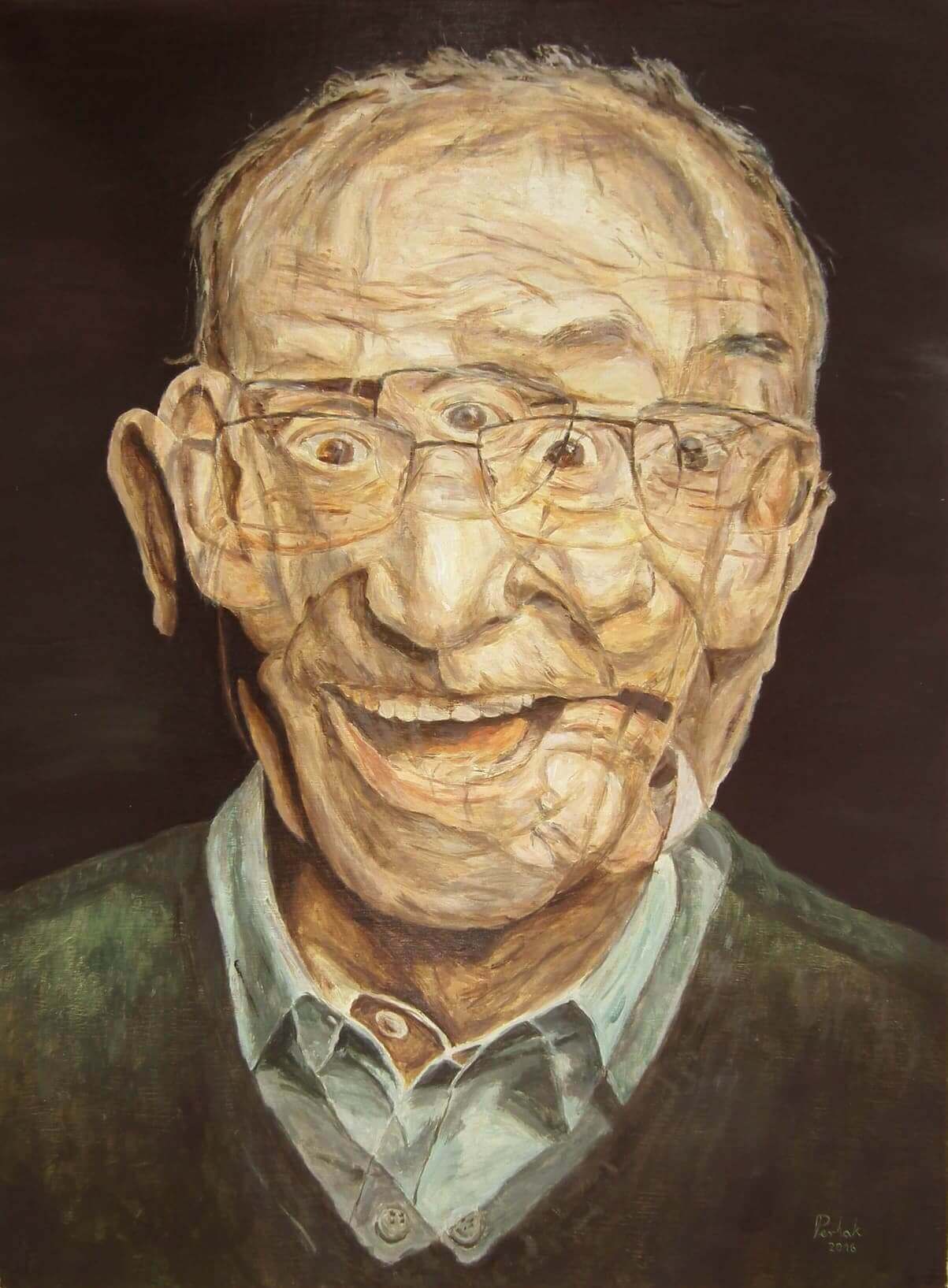
Moving nut - Radek (Poland) | Oil on canvas
I spoke with many men in prison. I had personal conversations, with the advantage that I had to keep everything to myself, so they told me a lot. There were also group meetings and religious services I gave. It was very important to me that I could fuel energy in the belief that no one is a lost cause, everybody has a future. I believe that I have received more than I could give at that time.
I also had to realize that everyone is different, no one is like the other. Our time in life should not be reduced to the crime we’ve done. [...]
If you look at the world statistics (London Institute of criminal Studies), USA has more than 2 million people incarcerated, which is 629 people per 100.000 prison rate, the highest in the world (to compare, Metropolitan France has a rate of 119).
But are there worse people in the US than in France ? The statistics don’t give that information. It is undeniable though that it’s society’s responsibility when they put somebody in prison.
My personal conviction is that nobody’s lost and that justice will be done after life, but still, justice has to be done on earth, and I work with many others to help do it the best way possible.
- What did those around you say when you decided to support this cause? And what are they saying now?
When I founded the Art and Prison exhibition, I surprised myself. You see I speak a lot, people hear, they have a certain satisfaction of voyeurism but I am not an entertainer. Like everyone, I need quiet time to recover. Art was something like this : I didn’t need to speak. Art speaks for itself, and gives a message. Unlike when I spoke, presented, preached, and I wondered if any of it served its purpose, Art was understood.
What is the result ? After 12 years and about 40 exhibitions, in different countries, the reaction of people is similar, whatever the background - museums, schools, ministry of justice, art galleries - they are touched, they don’t expect this coming from prison, there is humor, hopefulness, even joy sometimes, expressed with nice colors. I think the reactions were very positive.
.jpeg)
RE-LAX - Karel (Czech Republic) | Oil on canvas
- Can you see a reflection of society in the painting ? What does it tell us?
In many ways, prison is a mirror of society.
It’s interesting what is coming in right now because, with the war in Ukraine, European people thrive for peace, and people’s hatred is less directed towards convicts and this part of society. It seems like the perfect time to bring a little peace in society, especially in Europe. Diminishing hatred towards one another, stopping the spiral of violence. And we ask ourselves how can we introduce the voice of reconciliation, and not of revenge ? You can bring this into discussion by looking at the paintings of the exhibition.
Food for thoughts : sometimes we receive art pieces from people who have a death sentence and by the time it arrives in our hands, the person is already dead in the United States. But on the other hand, sometimes the author of the painting has been released when his work comes to us. In every case, dead or alive, something remains, though they are quite different stories.
- How do inmates react when they engage in Art activities for the first time in the context of Art and Prison? When they exhibit their work?
- How do the people who visit the exhibitions react?
But there are others : they are astonished, surprised… They realize that people are doing many things in prison like music. They are like us.
Nobody can be sure that they won’t end up in prison one day. It’s a sort of sensibilization that’s important.
There are also “Art collectors”. They want to find the next Picasso - and we have some ! We do not sell them, unless we get a very substantial price that could fund the activities of the association. But I don’t have time to make money with Art.
I am happy that Carré d'Artistes is helping us to raise awareness of our initiative and to strengthen the visibility of Art and Prison thanks to its important international network of galleries. Marseille is also an interesting choice because of some of the crime issues it has experienced.
- It must be hard for you to see the difference in treatment in prisons around the world
It’s 39 degrees right now in Germany [4th of August 2022]. Can you imagine, right now, in these very warm temperatures we are experiencing, how it is in prison cells in Jamaica where you can’t open a window? 50 degrees inside, when I experienced it, after 10 minutes, I was dead inside. It was also an incredible experience when I went to Manilla, to a prison with 5 000 people, without AC, 40-50 degrees everyday, starving, dying in their prison cells. I have friends working all over the world, in Chad, in Syria, in Madagascar, in Tanzania. Heat is also doing a lot of damage there.
On another note, there are some wonderful prisons in Norway and Sweden, they have the imagination of freedom inside. They are treated as human beings not only as criminals, so it is possible.
- If you had to sum up Art and Prison’s role in 3 words, what would it be?
Measures to bring people back to society
More humanity in society. We need to treat people with humanity, like human beings
More than the basic treatment : standards of Hygiene, not to be tortured, executed, human standards to be treated like human beings
- What are your wishes for the future of the association?
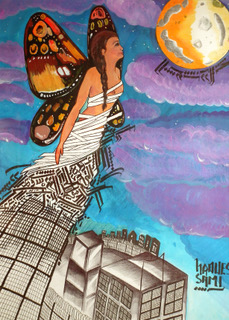
Flight to hope - Samie (France) | Mixed technique on paper

